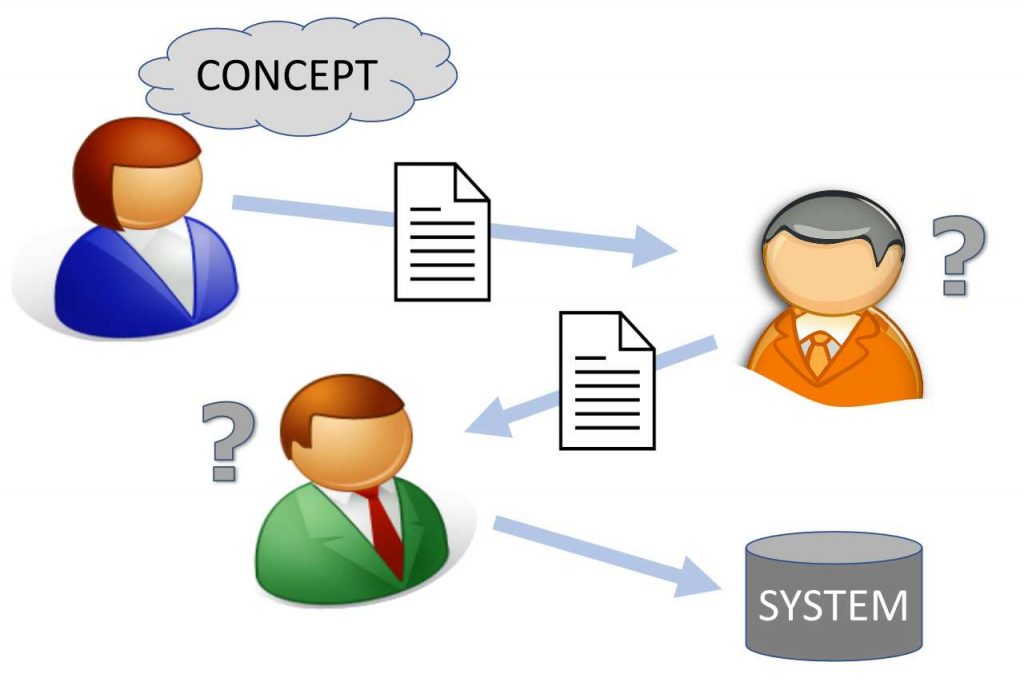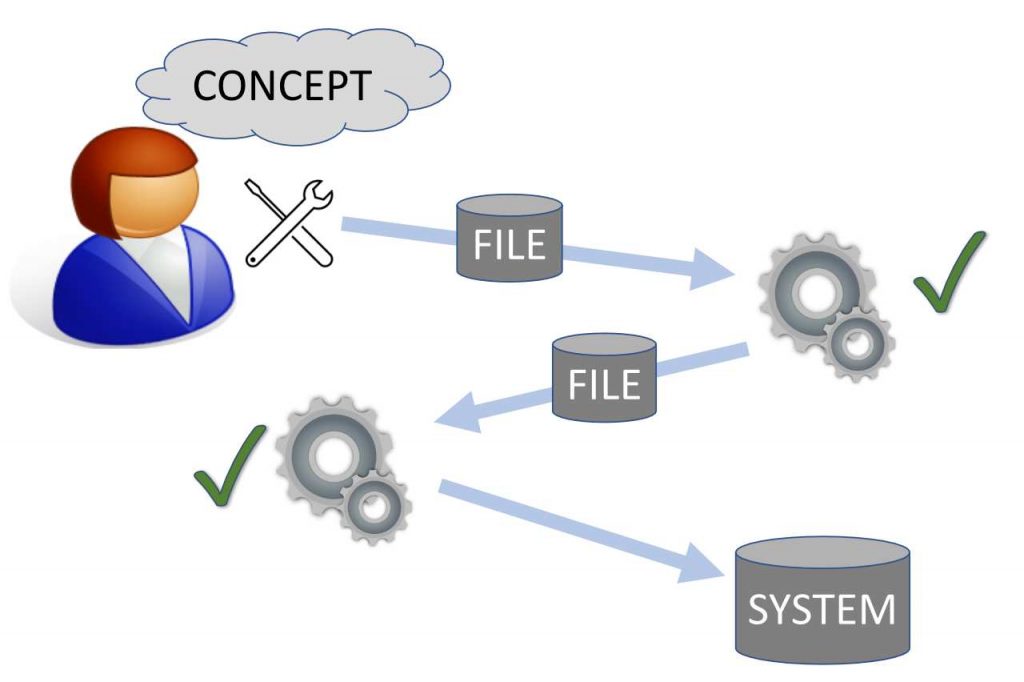What’s wrong with the traditional way of doing things?

The traditional way
Since the first business use of computer-based information systems in the late 1950s business systems have been defined using a series of specifications. The starting point for these is usually a requirements specification outlining what the business needs from the system. The requirements are elaborated in a series of stages until they reach the point of detailing the technology components of the system. Crucially, the various specifications are expressed in the form of paper documents, even when the documents are created with a word processor. As documents are created and interpreted inevitable inaccuracies and misunderstandings creep in. The final technical descriptions are not comprehensible for the business, and so there is no check on correctness until the system is completed.

A better way
The most important step in improving the situation is to provide a tool (or tools) to allow the business to express its objectives in a sufficiently precise way. What the tool produces is not a paper document but a file (or files) containing a structured description of the business objectives in machine-readable form. This file can be reliably processed by subsequent stages because the structure is known without the need to guess or interpret. Processing can follow as many stages as required to reach the point where the technology components are fully specified. In some cases it may even be possible to create the operational technology directly without the need for human coding. If paper documents are required these can be generated from the files in the same way.

Putting the business in control
An obvious consequence of capturing structured business objectives is that the process of creating business information systems becomes faster, cheaper, more predictable and higher quality. The same applies when the inevitable need for change arises. There are a number of other benefits to be gained from putting the business in control. It becomes much easier to communicate business issues and to promote shared understandings across all areas of the business. Systems can be defined and evaluated in more detail before a commitment is made to deploy them. The information structures and processes can provide traceability to demonstrate compliance with regulations and standards. This does not eliminate the need for an IT function to manage deployment, backup, load balancing , and so on, but this is no longer a constraint on business strategy.
Read more about the kinds of modelling techniques available.
